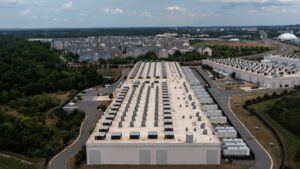Hedge fund of London billionaire Crispin Odey says traders are ‘gaming’ iron ore markets

Pic: Tyler Stableford / Stone via Getty Images
It’s been a big year for iron ore prices, which surged to record highs on supply shocks caused by the Vale dam disaster in Brazil.
And according to a fund manager at Odey Asset Management (OAM) — the hedge fund run by billionaire Crispin Odey — daily market prices are increasingly susceptible to manipulation.
Rather than being set on trading exchanges, benchmark iron ore prices are established via price assessments, where index platforms such as S&P Global collect data on spot-market sales from producers, traders and steel mills.
And speaking at a conference in Singapore, Henry Steel, who runs the Concentrated Natural Resources Fund at OAM, gave examples of how major Asian trading houses game that system.
According to the FT, Steel’s presentation showed how trading houses can take bullish positions on benchmark prices in iron ore derivative markets, and then buy up small iron ore shipments to drive up the price in spot markets.
Steel added that if prices more accurately reflected market fundamentals, then the big iron ore producers would attract a stronger stock market rating because the reduced volatility would create a more stable earnings outlook.
Prices for benchmark 62 per cent fines have had a rollercoaster year, rising from less than $US70/t ($103/t) last November to a record high above $US125/t, before falling back below $US90.
Based on the Metal Bulletin Fastmarkets index, benchmark prices rose back to four-week highs on Friday to close at $US88.06/t.
Steel said there should be more regulatory oversight of the sector to prevent manipulation, and suggested that big producers contribute more tonnage to spot markets which would increase liquidity and effective price discovery.
The current annual volume of seaborne iron ore is around 1.5 billion tonnes, but only around 10-15 per cent of those prices are set using the spot market.
UNLOCK INSIGHTS
Discover the untold stories of emerging ASX stocks.
Daily news and expert analysis, it's free to subscribe.
By proceeding, you confirm you understand that we handle personal information in accordance with our Privacy Policy.








